by André, Adriano, Noor and Natalia,
Last month we organized our second water reclamation symposium. With these public events we aim at sharing our main findings, engage local stakeholders and raise the awareness regarding the potential for water reclamation. This time around we asked DNAAS to host the symposium, which they accepted – thank you so much for all the support!
One year ago we had our first water reclamation symposium (here and here) which was a success. For this year we decided to focus more on presenting lessons learned from water reclamation projects around the world, focusing both on technical and social aspects and trying to translate those into the Mozambique context.
Luuk, having come from the Netherlands specifically for the symposium, went first and introduced the project. Basically he discussed how “every drop counts” and what can decision makers and practitioners do in order to save water in the urban water cycle. One of his main points was the importance of water reclamation projects, including water reclamation, demand management and leakage reduction.
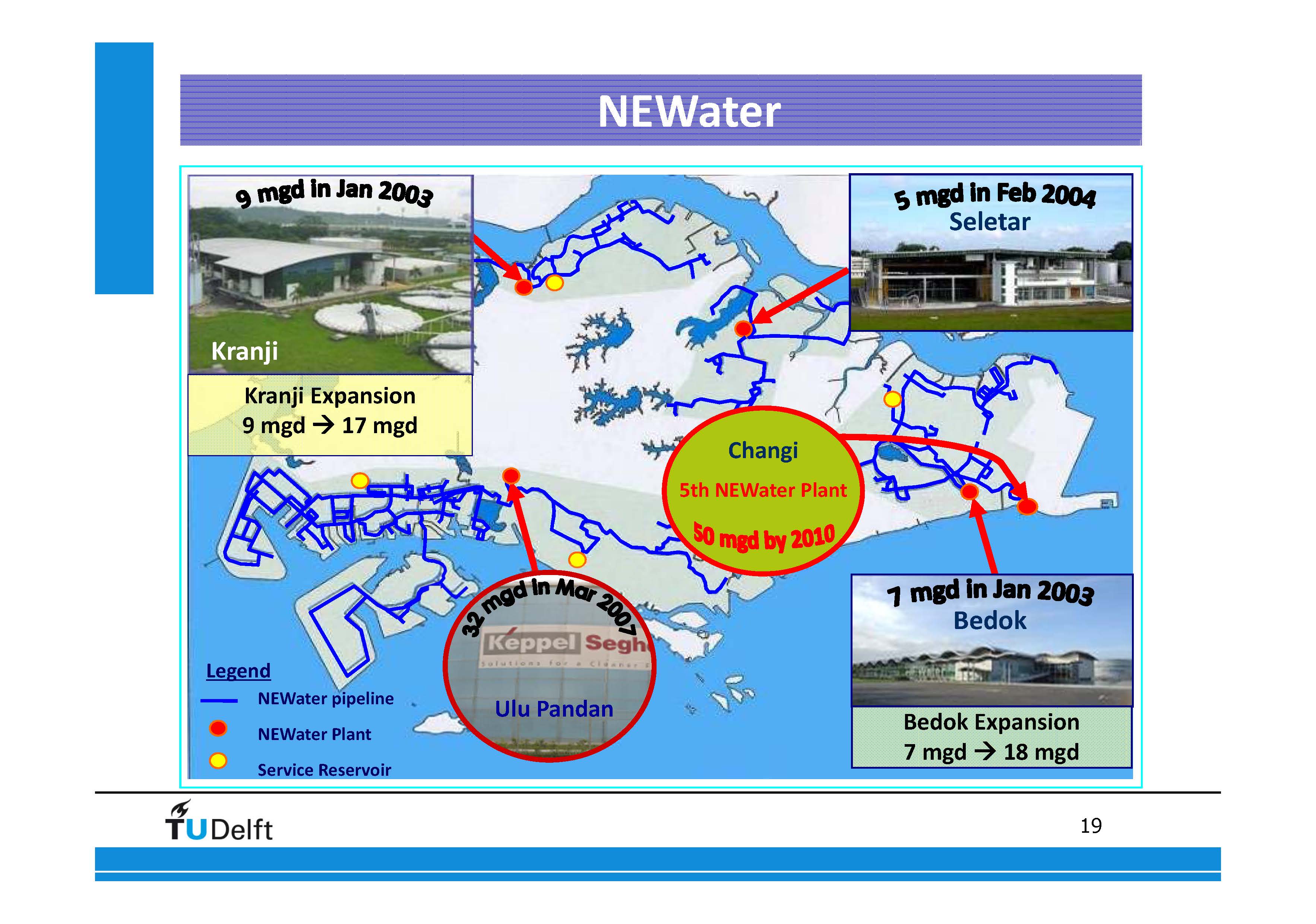
From Luuk’s presentation: Singapore’s NEWater.
Adriano shared experiences of institutional frameworks that are conducive to water reclamation. Two cases were considered, Bangalore (India) and Tunisia. Bangalore was selected because of its interesting, challenging, and promising institutional arrangements for water reclamation for municipal and industrial purposes. Tunisia was picked due to its longstanding water reclamation projects, that are integrated in the planning and design for irrigation systems. For both case studies, the presentation highlighted: (1) the water reclamation systems, (2) the policy and legislative apparatuses regulating water reclamation, (3) the organizational structures in place and their responsibilities relating to water reclamation, and (4) the challenges related to institutional arrangements for the Mozambican context.
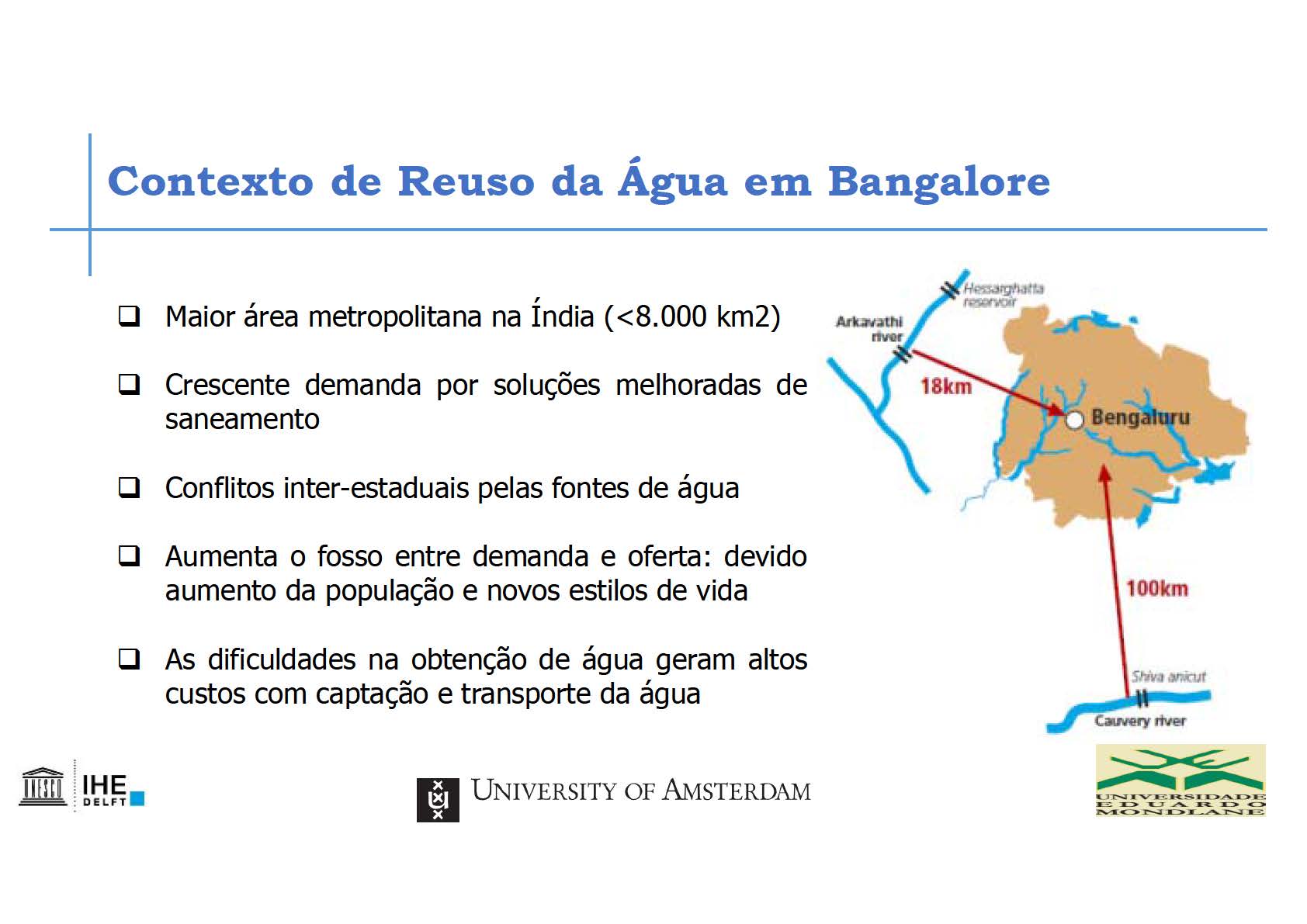
Adriano discussed the institutional framework for water reclamation in the city of Bangalore, India.
Natalia was visiting Mozambique for the first time and presented her experience with international cooperation for water reclamation in viticulture in South America. This presentation came from her previous – which means a lot of hand on experience – and focused on the cases of Mendoza (Argentina) and Tarija (Bolivia). Natalia showed that for the Bolivian producers, the existence of the WWTP is not necessarily negative for the community or the local environment, and that if it is well managed it may even be beneficial to regional agriculture. Natalia also discussed how important lessons, learned about the participatory water management model in Mendoza through the exchange of producers, helped to identify the challenges in implementing water reclamation in Tarija. This presentation perfectly crystallized the objective of this symposium: how can experiences of water reclamation from one country can be used in another?
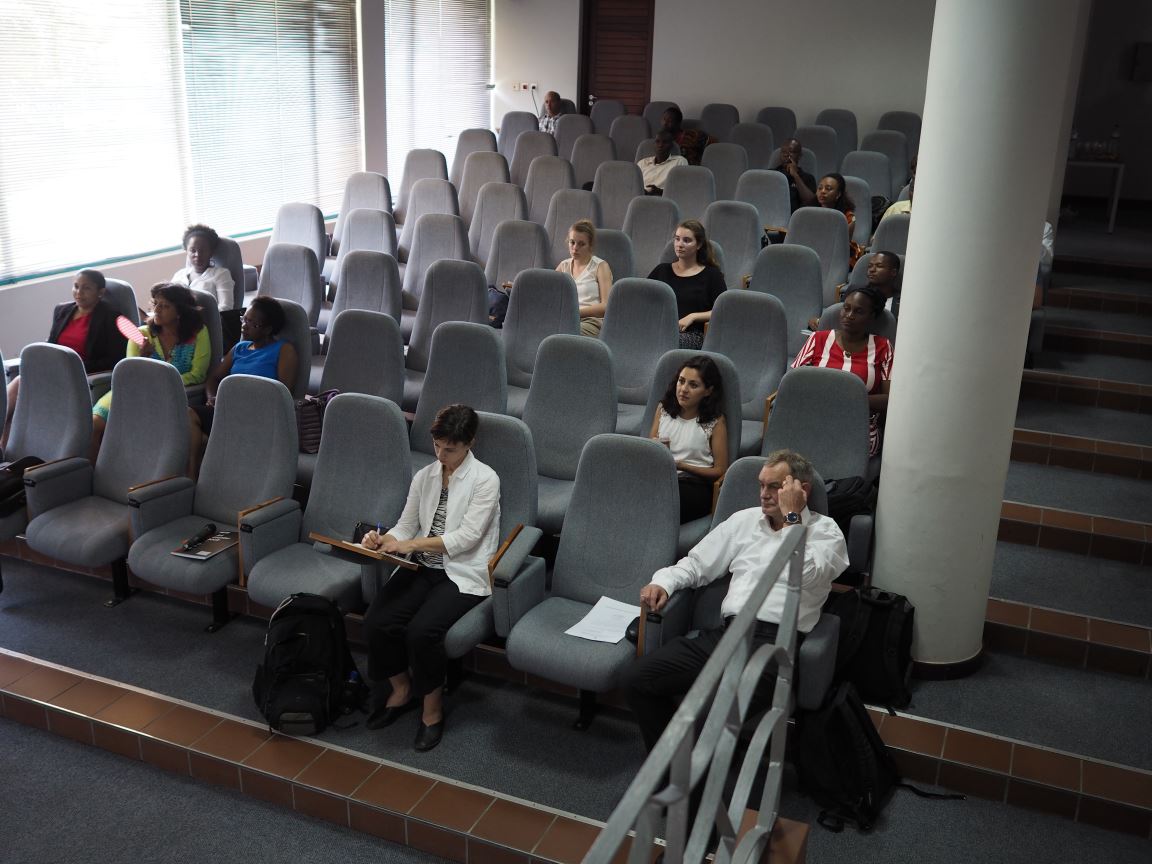
Not many attendants but very insightful discussions.
We then went to the technology side of water reclamation with Noor presenting tree cases of water reclamation in industry in developed and developing countries. Noor particularly focused on the drivers behind each project, main industrial applications, the technology involved, water prices and benefits. Noor‘s presentation had three very diverse examples, from DOW Chemical, in Terneuzen (the Netherlands), Chennai Petroleum Corporation Ltd, in Chennai (India); and Mondi Paper and SAPREF in Durban (South Africa). Finally, Noor described a number of industries in Maputo with potential to use treated wastewater in their processes.
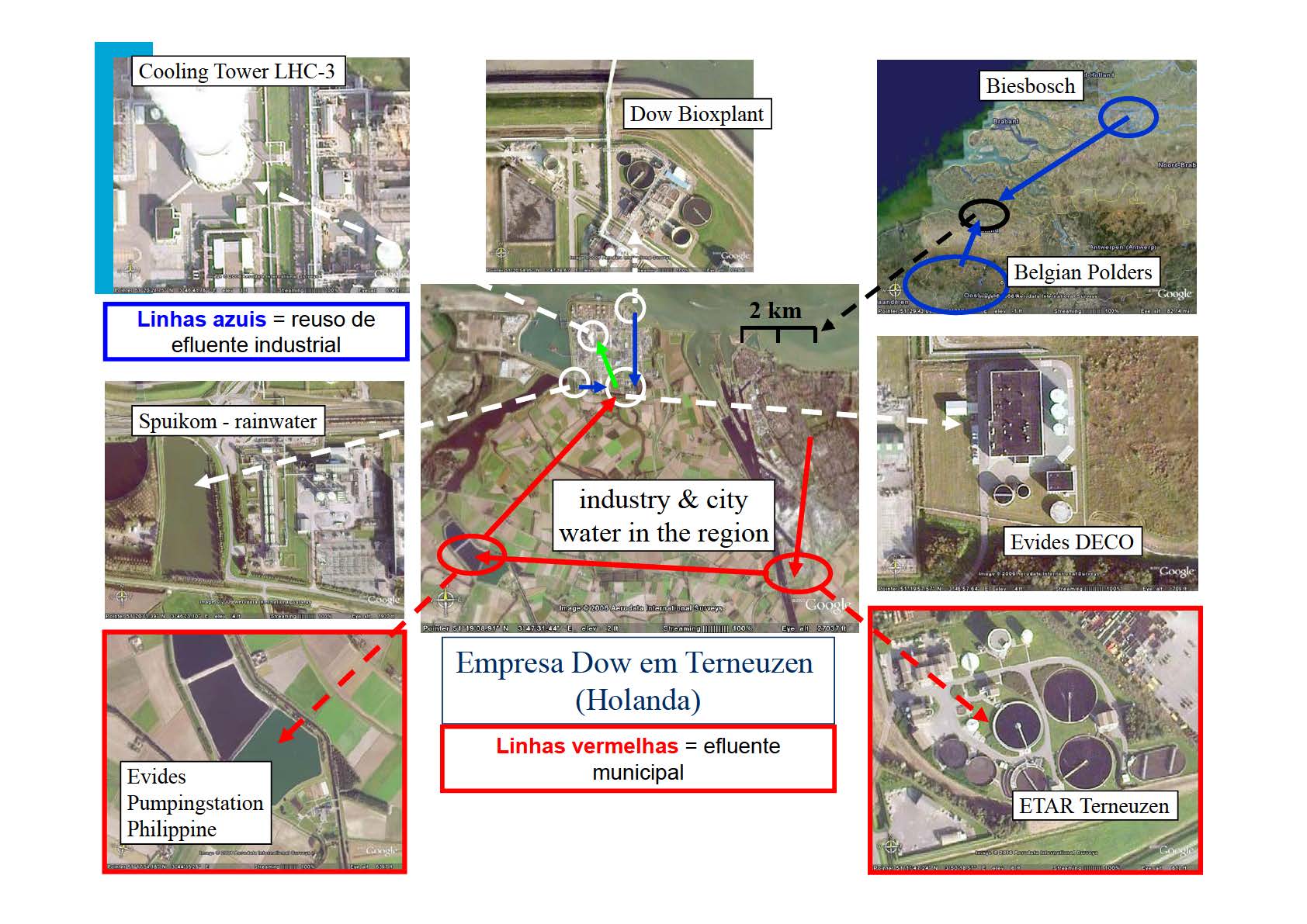
Noor made an in-depth analysis of the water reclamation scheme for DOW Chemical in Terneuzen, The Netherlands.
André went last and his presentation focused on the existing city-wide sanitation Masterplan (here and here). The message was the following: even if water reclamation does not become reality in the next 5-10 years, infrastructure planning should be made in such way to allow it down the road. One of the examples that André gave was the projected sewer network and wastewater treatment plant for the area of Matola: with some adaptation this infrastructure could be used to supply water to industries in the area, including MOZAL. Such move would allow saving thousands of cubic meters each month and could even be a driving force to expand the sewer network to other areas of the city. This is definitely something to keep discussing.
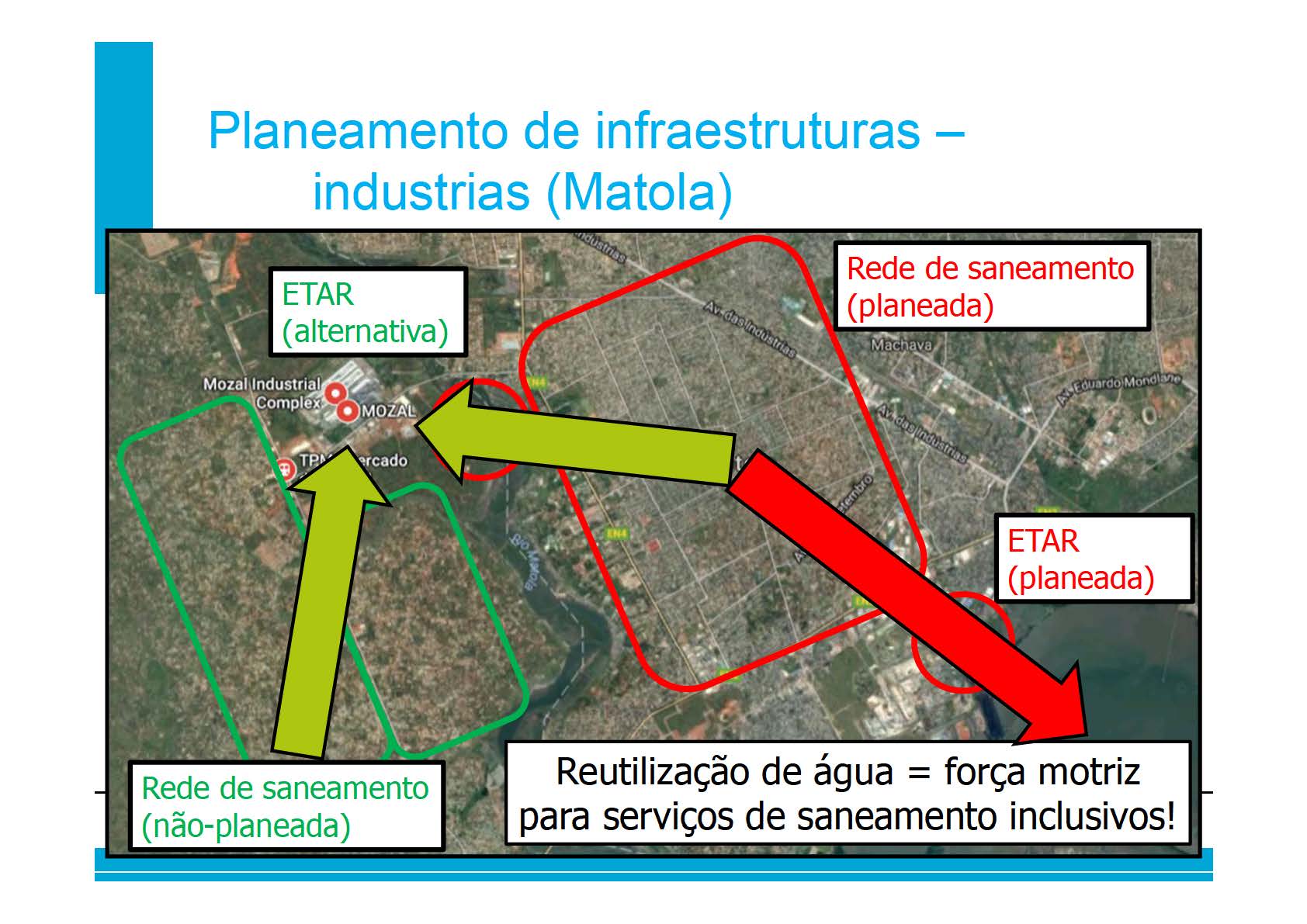
Water reclamation in Maputo? I discussed how the existing sanitation Masterplan could be adapted to allow water reclamation for industries in the future.
I am very satisfied with the quality of the presentations and I’m sure that those who attended learned something – and that includes me! Finally, I would like to, once again, acknowledge the support given by DNAAS throughout the day. If you would like to get a copy of the presentations just send me an email (a DOT marquesarsenio AT tudelft DOT nl).





















Pingback: My newest peer-reviewed article | Sustainable freshwater supply for urbanizing Maputo, Mozambique